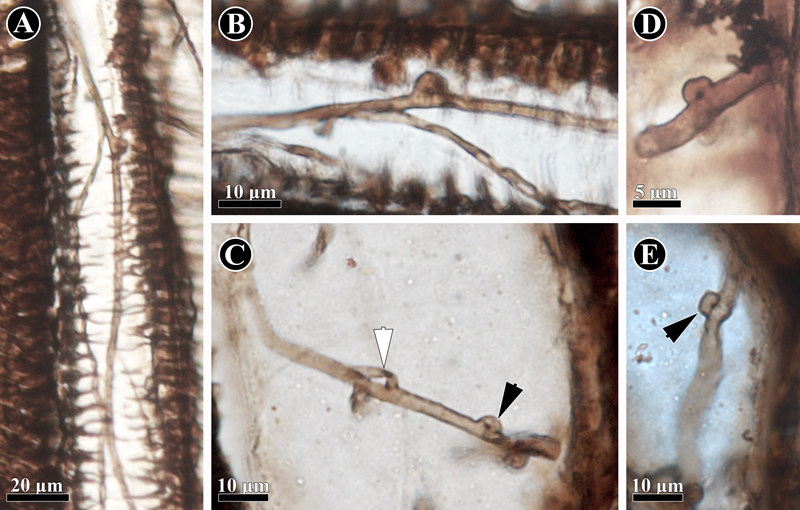
Hyphae with clamp connections within tracheids of the primary xylem of the fossil stem Shanxioxylon sp.
Widespread coal deposits during the Carboniferous and Permian Periods of the late Paleozoic. A widely accepted explanation for this peak in coal production is a temporal lag between the evolution of abundant lignin production in woody plants and the subsequent evolution of lignin-degrading Agaricomycetes fungi, resulting in amounts of lignin-rich plant material accumulated.
Recently, Dr. WAN Mingli and Prof. WANG Jun from Nanjing Institute of Geology and Palaeontology, Chinese Academy of Sciences reported the occurrence of fossil fungi in silicified cordaitalean stems from the Cisuralian (Permian) Taiyuan Formation of Yangquan City, Shanxi Province, North China.
Fungi occur within parenchymatous cells of the pith and tracheids of the primary xylem. The fossil fungal hyphae consist of branching, septate hyphae with clamp connections and, therefore, are assigned to Basidiomycetes. The clamp-bearing hyphae from the Asselian–Sakmarian of North China are the first evidence for unequivocal basidiomycete body fossils in the Cathaysia.
This discovery provides the first evidence of cordaitalean stems colonized by basidiomycetous fungi. Although the lower systematic affinities of the fungi currently remain unsolved, their existence sheds light on the multiple levels of biological association and interaction that had shaped the Permian terrestrial ecosystems. Their work also deny the fungal evolutionary lag hypothesis by the direct palaeontological evidence.
This work is supported by Chinese Academy of Sciences, State Key Laboratory of Palaeobiology and Stratigraphy, and the National Natural Science Foundation of China.
Download:
